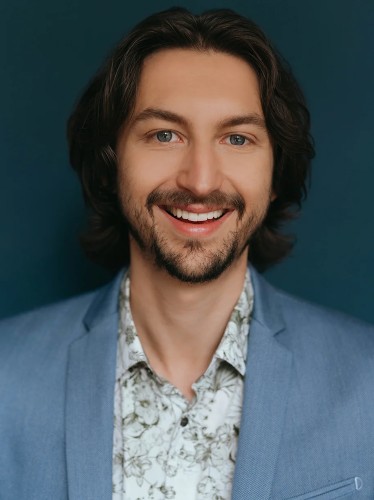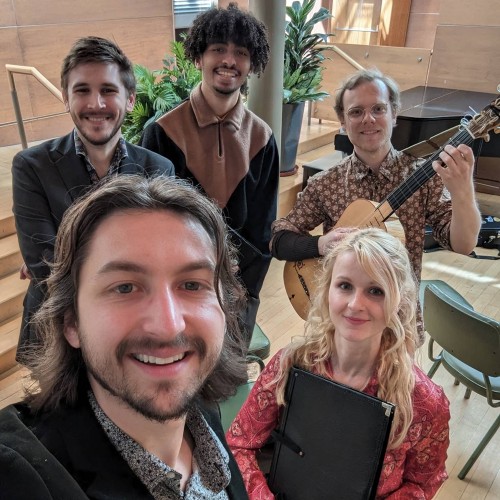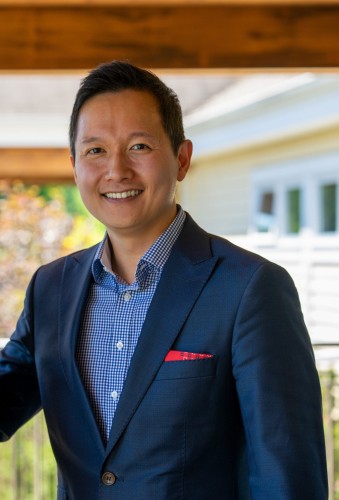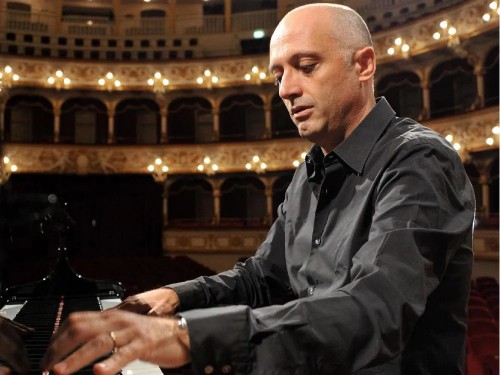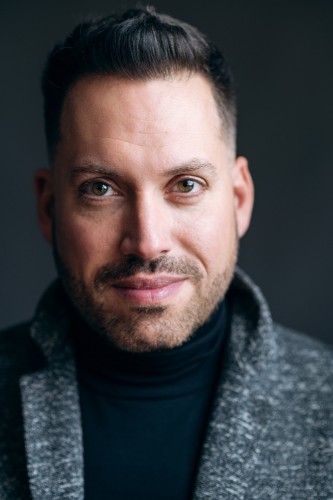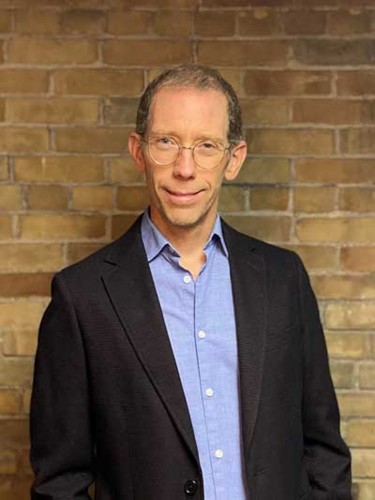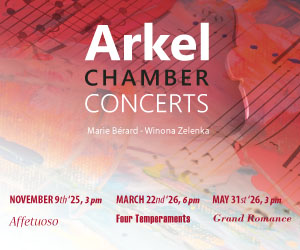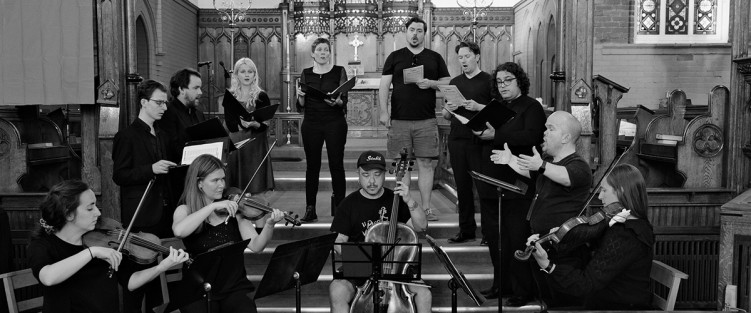 Barely a week before going to press, we wrote to a handful of individuals responsible for planning concert seasons in our neck of the woods. We explained that we were thinking of launching this feature, ARCS, and were hoping to get enough of a response within the next few days to get it going in this Oct/Nov print issue and then continue it online over the course of the fall.
Barely a week before going to press, we wrote to a handful of individuals responsible for planning concert seasons in our neck of the woods. We explained that we were thinking of launching this feature, ARCS, and were hoping to get enough of a response within the next few days to get it going in this Oct/Nov print issue and then continue it online over the course of the fall.
As we explained in our letter, the premise of the feature is to explore some of the ways in which the work of composing an individual piece of music parallels the work of putting together a whole concert, and even a whole season. And we offered the same three questions to all the individuals we invited to respond:
QUESTION 1: As a rule, an individual piece of music has some kind of composed arc to it (beginning, middle, ending, for example). Is there a piece of music in your first/next show that is either a good example of this “rule”, or refutes it in an interesting way?
QUESTION 2: Similarly putting together a whole concert could be seen as composing an event – the choice of works that will be presented, and the sequence in which they will be presented. Using the same concert you referenced for your first answer, or some other, speak to this. Note: not all reasons have to be highfalutin’. Lots of curatorial decisions are pragmatic and these also offer interesting insights for readers.
QUESTION 3: Looking back at your responses to questions 1 and 2, how would you say the answers you gave there pertain to your whole season now getting underway, in terms of some overarching idea or guiding principle?
Here’s how the first few individuals we contacted responded.
(1) Alexander Cappellazzo: Apocryphonia
Q1: One particular work?
Our upcoming Amor Con Fortuna: Songs of 16th Century Spain concert on October 15th has this piece by Mateo Flecha the Elder called El Fuego. It’s this ten-plus minute song from a genre during the 16th Century called an ‘ensalada’ (salad). Essentially, they’re these epic, long disaster stories set to different little tunes that culminate with the day being saved by the appearance of the Virgin Mary or some angels, and perhaps some sort of raucous celebration afterwards. In this specific case everything is on fire (the aforementioned fuego) until it is not, and then a fellow named Joan plays the bagpipes while people sing praises to the Virgin. The music shifts here and there from these frantic rhythms to more “church-like” motet sections as the story progresses; the word painting is quite spectacular!
Interestingly enough, since the ensalada genre is a mish–mash of smaller works of music, there’s a sort of chaotic continuity to the overall musical journey even while the textual narrative is relatively straightforward. There are no reprises of past material, and the musical styles shift depending on the text, so as a listener the whole beginning~middle~end cycle is slightly refuted by not knowing what exactly is next to come.
Q2: The concert as a whole?
This is the most exciting part about concert curation; creating something brand new from the sum of its parts. I wonder what would happen if you gave two different people the same music to program; how different would those two concerts feel depending on their order?
Each Apocryphonia concert featuring Renaissance vocal quintet, Diapente, is programmed by a different member of the quintet; “Amor Con Fortuna” is the creation of our lutenist/tenor Jonathan Stuchbery. I know he took a particular effort in programming this concert to have both the poetic texts and the musical styles have a sort of continuity to them as the concert progresses. Specifically, he took an interest in the linguistic shift occurring in Spain at that time, so the concert reflects both a linguistic and musical evolution of thought. Beyond that, the emotional arc of the poetry was chosen in a way to keep things varied throughout the concert.
In past Apocryphonia concerts, I have played with splitting up sonatas between other works, or switching the order of the movements in order to achieve a desired effect based on the concert’s overarching musical narrative. Also this season we’re doing our second iteration of our Cabinet of Curiosities concert in June, which takes several multi-movement musical works and completely randomizes them on the night of the show. I find that especially fun because it highlights musical contrasts in a way only complete randomization could do.
Q3: Shaping the season?
The joy of vocal/chamber programmation is that unlike larger scale works like symphonies or operas you get to play with different combinations. I take multiple factors into consideration when programming a full season: time period, nationality, instrumentation, etc. The big thing is making sure the year feels varied and that no two concerts are too similar or too close to each other. I am a fan of creating narratives through programming; each concert has a story to tell, literally or conceptually. How that relates to the overall season is a bit more abstract however; my overarching aim is that if someone came to every show in the season they would feel like they saw something unique each time.
Tenor Alexander Cappellazzo is Diapente and Apocryphonia’s founding artistic director. Amor Con Fortuna plays at the Heliconian Hall October 15 at 7:30pm.
(2) Wonny Song: Mooredale Series
Q1: The opening work?
In our upcoming Mooredale Series program, pianist Benedetto Lupo will take us on a captivating journey through Nino Rota’s 15 Preludi. Each piece is imbued with its own distinct character and mood, together crafting an evolving narrative that flows through a range of tempos and emotions. We begin with the vibrant “Allegro molto,” transition through contrasting feelings – such as the introspective “Andante sostenuto ed espressivo,” and culminate in the vigorous “Allegro robusto,” creating a satisfying narrative arc.
In contrast, Aleksandr Scriabin’s 24 Preludi, Op.11 presents a fascinating departure from traditional storytelling. While showcasing a wide spectrum of emotions, many of these preludes, like Preludes No.4 and No.18, tend to feel more episodic or fragmented. Rather than adhering to a clear progression, they capture fleeting moments of expression, offering an intriguing contrast to Rota’s cohesive narrative. This approach reflects a broader understanding of musical storytelling, where the absence of a defined arc can evoke a unique emotional experience, inviting the audience to engage in a more impressionistic way
Q2: The concert as a whole?
Starting the concert with Rota’s preludes sets a tone of accessibility and elegance, offering a light and engaging introduction. As the program shifts into Scriabin’s preludes, the atmosphere deepens, becoming more reflective, intense and emotionally rich, which heightens the listener’s involvement. This order works effectively because it creates a natural progression, both emotionally and technically, allowing the concert to gradually build toward Scriabin’s profound, almost mystical sound world.
From a practical viewpoint, this structure benefits the performer as well. Rota’s preludes, while musically expressive, are less demanding compared to Scriabin’s. This makes them an excellent way to ease into the performance before tackling Scriabin’s more challenging and emotionally charged pieces. The flow of the concert feels organic, with the music growing in complexity and emotional weight.
In essence, pairing Rota’s and Scriabin’s preludes offers a well-rounded journey that moves from neoclassical simplicity and grace to the Romantic intensity and depth of Scriabin’s music.
Q3: Shaping the season?
Looking at the season as a whole, a clear guiding principle emerges: a blend of innovation, tradition, and cross-cultural dialogue. The concert series emphasizes diversity in programming, both in terms of repertoire and instrumental combinations, creating a season that spans multiple musical worlds and styles. The overarching principle is one of balance between contrast and cohesion. Each concert creates its own emotional and stylistic narrative while contributing to a larger season-long exploration of different musical traditions and emotional arcs. Across the season, the audience is taken on a journey through different musical landscapes, from classical and neoclassical to Romantic, contemporary and Latin American influences. The programming invites listeners to experience both the familiar and the new in an engaging, progressive arc.
Wonny Song is Mooredale Concerts’ Artistic Director. Benedetto Lupo, piano is at Walter Hall, University of Toronto, on October 20, at 3:15pm.
(3) Jean-Sébastien Vallée: Toronto Mendelssohn Choir
Q1: The opening work?
Our upcoming concert, The Love Affair, illustrates how an entire program can be a carefully constructed arc, guiding the audience through different aspects of love, all tied together by the theme of dance.
We begin with Brahms’ Liebeslieder Walzer, which sets a light, joyful tone with its charming waltzes. This serves as the “beginning” of the concert’s emotional journey, evoking the simplicity of romantic love. Brahms’ Drei Quartette then deepens the narrative, moving into more contemplative and introspective territory, adding complexity to the emotional arc.
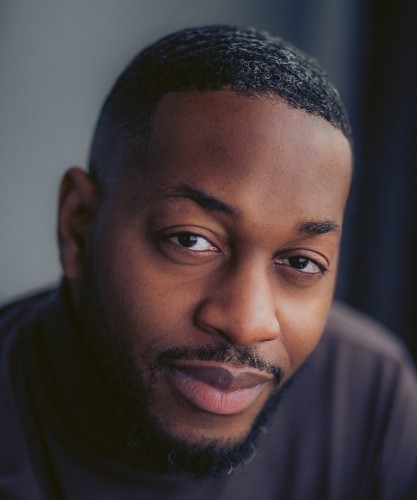 After the intermission, the program shifts with Aaron Manswell’s Poverty. This piece stands in stark contrast to the romanticism of Brahms, introducing a modern, socially conscious reflection on different forms of poverty—spiritual, social, mental, health, and economic. Opening with a reference to Matthew 11:28, the piece uses double entendres to explore how poverty manifests in more abstract ways, like loneliness and feelings of inadequacy. Musically, Poverty draws from Romantic Classical, Gospel and R&B influences, and its slow, unhurried tempo invites the audience to sit with its emotional and social message.
After the intermission, the program shifts with Aaron Manswell’s Poverty. This piece stands in stark contrast to the romanticism of Brahms, introducing a modern, socially conscious reflection on different forms of poverty—spiritual, social, mental, health, and economic. Opening with a reference to Matthew 11:28, the piece uses double entendres to explore how poverty manifests in more abstract ways, like loneliness and feelings of inadequacy. Musically, Poverty draws from Romantic Classical, Gospel and R&B influences, and its slow, unhurried tempo invites the audience to sit with its emotional and social message.
Finally, the program culminates with Martín Palmeri’s Misa a Buenos Aires (Misatango), where the sacred meets the secular in a fusion of liturgical music and tango. The use of the bandoneon in this work adds a uniquely passionate and sensuous texture, bringing the intensity of the tango to life. This final piece serves as the emotional climax of the evening, merging love, faith and dance in a powerful conclusion.
Overall, The Love Affair as a concert creates its own arc, taking the audience on a journey from light-hearted romance to deeper, more complex reflections on love, before reaching an explosive and moving finale with the tango-infused Misatango.
Q2: The concert as a whole?
For The Love Affair, several pragmatic factors influenced the programming. The first half features the TMSingers, our professional chamber choir, accompanied by piano, which allows us to focus on more intimate, lighter works like Brahms’ Liebeslieder Walzer and Drei Quartette. These pieces don’t require a large ensemble, making them perfect for our chamber forces and easier to rehearse efficiently.
In contrast, the second half brings in the full power of the 160 voices of the Toronto Mendelssohn Choir, accompanied by a chamber orchestra. This shift is both thematic and practical: it allows for the performance of Martín Palmeri’s Misatango, a larger, more demanding work that requires the depth and intensity of a full choir and instrumental ensemble. This progression from smaller forces to full choir also gives the concert a natural build in energy and impact.
Q3: Shaping the season?
Similar to the concert I just discussed, the idea of Dare to Discover permeates the entire 2024-2025 season, encouraging audiences to experience both the familiar and the new. Visionaries: Vivaldi & Da Vinci blends music and multimedia to explore genius across disciplines, while Festival of Carols offers a fresh take on holiday traditions with surprising musical selections this year. The season balances innovation with timeless works, inviting both performers and audiences to explore bold interpretations and premieres, like those by Aaron Manswell.
Each concert, much like *The Love Affair,* is a carefully curated journey, blending discovery with tradition. The season itself forms an arc, with Beethoven’s Missa Solemnis at its centre. That concert is not only a tribute to the choir’s storied past but also a bold, forward-looking statement in choral artistry. Revisiting this monumental work, first performed in Canada by TMChoir nearly a century ago, honours our history while showcasing our ongoing commitment to artistic excellence and innovation. It reflects the culmination of our anniversary season and our dedication to pushing choral boundaries into the future.
Jean-Sébastien Vallée is Artistic Director of the Toronto Mendelssohn Choir. The Love Affair takes place at Koerner Hall, Royal Conservatory of Music at 3pm, November 3.
(4) Chris Friesen: Trinity Bach Project
Q1: The opening work?
The opening work of TBP’s first program of the season, Henry Purcell’s 1685 anthem, I Was Glad, is constructed as a lovely little musical triptych. It’s a vocal painting of Psalm 122 existing in three hinged panels, as it were. The first panel shimmers with trilling rhythms evocative of laughter and bright conversation as the ensemble sings of ascending the Temple Mount alongside one’s spiritual and familial relations. The middle panel drops a minor third to a new key and more solemn tone, with the injunction to pray for the peace of Jerusalem and those who live there. Then the third panel resumes the initial setting and buoyant mood in a polyphonic doxology that has great fun tangling up the words, “as it was in the beginning, is now, and ever shall be, world without end” (a phrase that envisions all time and eternity as a well-composed triptych!).
Q2: The concert as a whole?
Following the introduction provided by Purcell, the main event of our season opener is a pair of Bach’s cantatas linked by significant references to roses. One of them, BWV 72 (“Everything according to God’s will”), leaps into action with dramatic urgency from the strings and oboes at a vigorous tempo in A minor. The other, BWV 182 (“King of heaven, welcome”), begins with a sweet, stately processional duet between solo violin and baroque recorder in G Major.
I listened to these two cantatas a lot over the summer in both possible orders, often while jogging, tracking the progression of their energy and trying to put myself in the ears of an imaginary audience who might be hearing them for the first time. Both sequences had features that recommended them. In the end BWV72 won out as first in line due to the intensity of its opening (we launch the boat of the season by crashing it directly into the waves), its shorter length and the flow from its final stalwart hymn tune into the natural instrumental interlude provided by the opening of cantata BWV182. Even more importantly, this order allows us to conclude the entire program with the blissful dance of BWV182’s final movement. Like Purcell’s anthem at the outset, it sings of delighted communal entry into a cherished home, with recorder, strings and choir trading a melody back and forth like revelers holding hands in a circle. It never hurts to leave one’s audience in a state of musical euphoria at the end of a concert, right?
TBP has also been developing a tradition over the past two seasons of wrapping things up with the functional equivalent of a benediction. After the euphoria of the concluding applause, we typically lean to a place of reflection and rest as a final send-off. In this program, we do so with Maurice Duruflé’s gentle a cappella classic, Ubi Caritas, which gives the assurance, “Where charity and love are, God is there.”
Q3: Shaping the season?
Season planning for Trinity Bach Project has tended to look less like an executive blueprint and more like a path laid down by walking. This season is no exception, as we continue to tweak repertoire decisions, line up venues, and settle performance and rehearsal dates for programs February through May. That caveat aside, there have been a couple of implicit principles guiding construction of the season. In the recent past we’ve presented a lot of pairings of Bach with other choral composers (“Bach and Mendelssohn,” “Bach and Rheinberger,” “Bach and Tallis,” etc.). This year we’re venturing more into curation along thematic lines, as with our season opener, “Bach and Roses.” There’s a program coming up in the new year, still to be officially titled, which will be along the lines of “Bach and Life Passages,” since it includes both a wedding and a funeral cantata. We’re also planning an instrumental-only program in early January, “Bach and Epiphany,” which conceives of three concertos as the gifts of the Magi. Six or seven months from now we’ll aim to conclude the trajectory of 2024-25 with another joyful dance, in a program built around the exultant cantata BWV117, “Praise and honour to the highest good.”
Chris Friesen is Executive Director of Trinity Bach Project. Bach and Roses will be performed Oct 3, 1pm at Trinity College Chapel; Oct 4, 8pm at Little Trinity Church, Nov 13, 8pm, at Grace Church on-the-Hill, and Nov 17, 3pm, at Metropolitan United Church.


